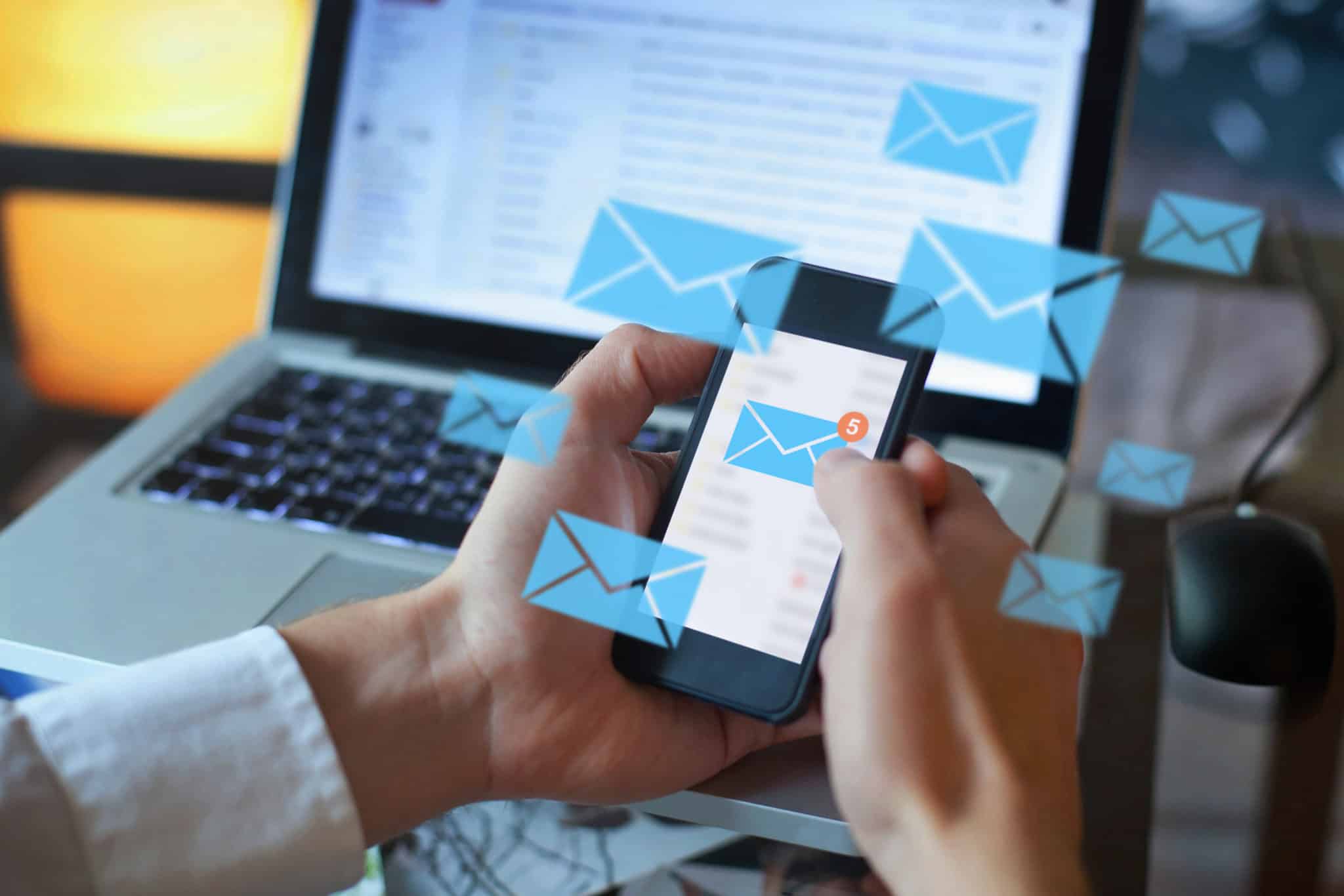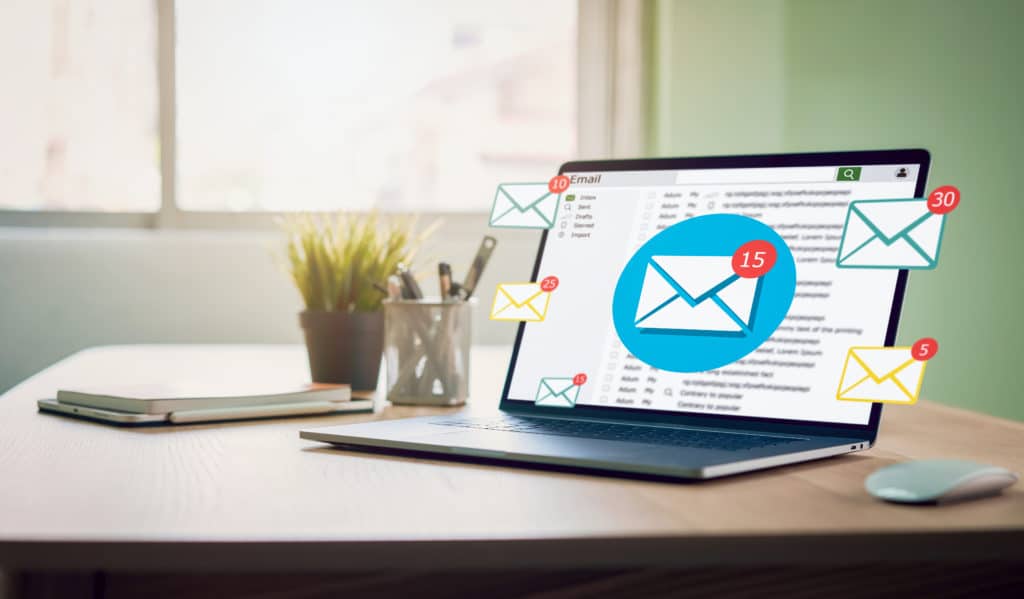We live in an age where email is still one of the most common methods of communication. Cold emailing, however, can be a tricky and daunting task.
I’ve been involved in sales for the past 5 years and have had my fair share of successes – as well as failures.
Cold emailing is a skill that takes practice to master, but with the right strategies and tactics, you can be successful in 2023!
What is Cold Emailing?
Cold emailing is the practice of sending emails to people or businesses who have not explicitly requested information from your organization.
Cold emails can serve many different purposes, including the following:
- Prospecting for new customers
- Introducing products and services
- Offering promotions or discounts
- Connecting with potential partners
It’s an excellent way to reach out to a broad audience without any specific prior contact or connection.
Benefits of Cold Emailing
Cold emailing has become an increasingly popular way for companies to reach out to potential clients, customers, or partners and build relationships.
Cold emailing is an excellent strategy for businesses because it allows them to make initial contact with their target audience without using more expensive and time-consuming marketing techniques.
By utilizing cold emails, businesses can reach out quickly and effectively without a large amount of overhead or resources. The key to successful cold emailing is being able to craft thoughtful, compelling messages that appeal to the recipient’s interests.
When done correctly, cold emailing offers a variety of benefits.

Benefit 1: Cold Emails Offer Rich Customer Data
Cold emails offer businesses a unique opportunity to collect rich customer data. By utilizing this form of communication, companies can gain insights into customer behavior and preferences and track their activity over time.
This data can be used to inform decisions related to the following:
- Marketing strategies
- Product development
- Customer service tactics
Furthermore, by collecting data from cold emails, businesses can better target their messages to customers based on their interests and needs. Additionally, tracking customer responses provides valuable feedback on which campaigns are more effective than others and can help optimize overall marketing efforts.
On top of that, customer data collected through cold emails offers a wealth of information about user interests and demographics, which can be used to develop highly targeted campaigns for maximum engagement and return on investment.
Companies that take advantage of this invaluable resource can create a competitive edge in the marketplace as they can better understand their customers’ wants and needs.
Benefit 2: Cold Emails Can Be Great for PR
Cold emailing can be an excellent tool for public relations. Through effective and targeted emails, organizations, businesses, and individuals living in the digital age can reach out to their customers and stakeholders personally yet professionally.
Cold emails provide an opportunity to create relationships with consumers, build brand awareness, and boost revenue. To perform cold emailing effectively, it’s crucial to craft informative and engaging emails.
As a form of marketing, cold emails have the potential to open up new opportunities for businesses by connecting them with potential customers from all over the world.
Benefit 3: Cold Emails are Scalable
One of the significant advantages of using cold emails for marketing is that it is incredibly scalable. With cold emails, businesses can reach many prospects quickly and easily without investing heavily in other communication methods like print or television advertising.
In addition, because emails are digital, they’re easy to tailor and personalize, as well as track progress across campaigns so that companies can measure their results. Furthermore, automation tools can streamline processes such as scheduling and sending bulk emails at scale by allowing marketers to efficiently create and deploy highly targeted messages to multiple audiences.
By automating the process, companies can leverage the power of data-driven intelligence to better target their prospects and optimize the effectiveness of their campaigns over time.
Moreover, since cold emailing is cost-effective compared to other forms of outreach, such as direct mail or telemarketing, businesses can make better use of their budgets without sacrificing quality or reach.
Additionally, scalability in cold emailing makes it easier for companies to increase their customer base with minimal effort – all while getting maximum returns from each message sent out.
Benefit 4: Cold Emails are Informative
Cold emails are an informative way to reach out to potential customers and build relationships. They are especially useful because they provide detailed insights into the customer’s history with your brand, allowing you to craft custom messages that target the needs of each recipient.
Cold emails can include data-driven information that helps you segment your leads and target them more accurately based on their interests and purchasing habits. For example, if a customer has purchased a product from your store in the past, you could send them a special offer or discount code as an incentive to come back.
Additionally, they can be used to showcase recent blog posts or other content initiatives that have been well-received by your audience; this helps keep people engaged on social media and also shows them what kinds of topics you’re interested in discussing with them beyond just product offers.
Finally, cold emails are an excellent way to update customers on new products, promotions, and events; this is particularly useful for businesses that need to make sure their customers know about new releases before anyone else does so they can be among the first to take advantage of them.
Benefit 5: Cold Emails Can Double Your Client List
You can quickly double your client list by cold emailing current and potential customers.
Cold emails are great for capturing the attention of prospects who may have been overlooked or forgotten.
Cold emails can also help you to build strong relationships with new customers, keeping them engaged and excited about your business.
This is particularly important because word-of-mouth referrals are an incredibly powerful influence on potential customers.
Cold emails allow your business to engage people who may not have otherwise heard of it directly, potentially leading to more business.
Drawbacks of Cold Email Campaigns
Cold email campaigns have become increasingly popular among marketers and businesses in recent years due to their potential for quickly gaining attention from a broad range of customers.
Despite the many advantages of cold emails, there are also some significant drawbacks that should be considered before jumping into this marketing campaign.

Drawback 1: Cold Emails Don’t Offer Immediate Results
One of the main drawbacks of cold email campaigns is that they don’t always offer immediate results, which can be a major setback for businesses or individuals expecting faster returns.
Compared to other forms of digital marketing, such as paid advertising, cold emails take more effort and planning when attempting to achieve the same results.
Cold emails also require more manual efforts in order to acquire accurate contact information and create engaging content. As a result, businesses may have difficulty determining whether their efforts are worth investing additional time and resources into their campaigns.
Drawback 2: Cold Emails Get Blocked
Cold email campaigns often get blocked by receivers’ email security systems.
This is because these emails are typically sent from unfamiliar addresses with suspicious subject lines and content, making them appear untrustworthy.
Additionally, many online services have implemented sophisticated filters that recognize certain words or phrases commonly used in spam emails and reject them outright before they even reach the recipient’s inbox. As a result, many emails fail to be delivered to their intended recipients, and the sender’s efforts are wasted.
Furthermore, sometimes recipients mark these messages as spam without even opening them, which can adversely affect the sender’s reputation in the eyes of service providers.
To make matters worse, if too many people mark an email as spam, it may be flagged across all other service providers as well, making it virtually impossible for any future messages from the same address to be received.
This means that unsuccessful cold emails can significantly damage a company’s credibility and overall marketing strategy.
Drawback 3: Cold Email is Highly Competitive
Cold email campaigns are highly competitive, as every day, more and more competitors are trying to reach the same target audience. Your chances of success eventually decrease because it becomes harder to differentiate yourself from the competition.
The sheer volume of emails other companies send makes it difficult to stand out. Customers may quickly become overwhelmed or bombarded with messages and no longer engage rather than pay attention to what you offer.
Additionally, because many businesses use the same platforms and automation tools, the quality of your message can be lower than necessary due to oversimplification or lack of personalization.
Drawback 4: Cold Email Takes a Lot of Time
Cold emailing takes a lot of time and effort, as it requires careful planning and strategizing to be successful.
Creating the necessary content for your emails can take a significant amount of time, as you must determine the best way to craft an engaging message that resonates with your target audience.
Furthermore, cold emails must be tailored to the individual recipient to be effective. This means you will have to spend time researching each potential customer and finding out more about their preferences and needs before creating an email specifically for them.
Our Cold Email Best Practices
By following the tips below, you can avoid common pitfalls and ensure that your messages reach the right people with the right message to increase engagement and conversion rates.
Use a Creative Subject Line
When creating an effective cold email, it is vital to crafting a creative and eye-catching subject line. A quality subject line will make the recipient more likely to open the email, which increases the chances of engagement.
To ensure maximum impact, it should be crafted with care and be as informative yet succinct as possible. A good rule of thumb is to use fewer than 50 characters in the subject line and utilize words that pique curiosity or inspire action.
When crafting a subject line for a cold email, it is essential to reflect on its purpose and what you are trying to accomplish. You can also consider using dynamic elements, such as adding personalization to differentiate your message from others in the same space.
This could include mentioning something specific about the recipient that resonates with them or referencing something relevant from their industry or profession.
A/B Test Subject Lines
A/B testing subject lines is an essential part of cold email best practices. This process involves creating two versions of the same subject line and sending each to a portion of your email list.
The purpose of A/B testing is to compare the performance of each email in terms of the following:
- Open rates
- Engagement
- Other metrics
- Click through rates
By testing small changes like word choice or punctuation marks, you can determine which version performs better and increase your chances for success when crafting emails.
For instance, if you are trying to decide between using a question mark or an exclamation mark at the end of your subject line, it is always best practice to test out both versions and see which one performs better.
Additionally, it is vital to keep track of what worked in the past and any new trends that may help improve performance in the future.
A/B testing will help you optimize your current campaigns and provide valuable data that you can use when planning future campaigns.
Get the Right Email Address
To ensure that your cold emails reach their intended target, getting the right email address is essential. To do this, you need to employ a few strategies.
Firstly, ensure an accurate customer database with up-to-date contact information.
This will save you time and resources in the long run – you won’t have to spend time confirming whether or not the address is correct.
Use Software to Automate the Process

Using software to automate the process of sending cold emails is one of the best strategies for increasing the efficiency of your email campaigns.
Automation makes it easier and less time-consuming to send multiple emails at once, helping you reach a larger audience and ensure each email is personalized correctly.
With automation, you can also set up rules that help you categorize different leads and track responses. This makes it easier to segment audiences and prioritize leads with higher potential.
Automating repetitive tasks like scheduling emails and tracking opens can save time, allowing marketers to focus on crafting more meaningful content for their prospects.
Additionally, using software allows users to view analytics to better understand how their emails are performing and tweak their strategy accordingly.
That way, you can optimize your messages for maximum engagement with minimal effort. An automated system helps streamline your cold emailing process by taking care of all the little details for you—meaning more time engaging prospects instead of managing campaigns.
Direct Your Message to the Person You’re Emailing
One of the most important things to remember when it comes to cold email best practices is that you want your message to be directed at the individual you are emailing.
This means going through all the steps necessary to ensure the person receiving your email is actually the right person for what you’re offering.
By doing this, you can make sure that the person seeing your message is someone who is likely to be interested in what you are offering.
It’s also essential to make sure that you customize each message and craft it in a way that is tailored to the individual, so they feel like you are addressing them directly.
Don’t Send Mass Emails
When sending cold emails, it is important to remember that mass emailing can be detrimental to the success of your campaigns.
Mass emails lack personalization and often come off as generic or impersonal—which will ultimately lead your prospects to dismiss your message out of hand.
Instead, take the time to craft individual messages tailored specifically for each recipient. This increases the chances of engagement with each prospect and helps build trust in your brand.
Segment Your Email List into Groups
It’s also important to segment your email list into various groups. This will help you ensure that the right message is being sent to the right person and can increase engagement with each prospect.
For example, if you are running a campaign targeting businesses, you may want to create separate lists for small business owners and corporate execs.
By doing this, you can tailor your emails accordingly, giving each group a message that applies to them—which increases the chances of engagement with each group.
Don’t Give Up too Soon
Cold emailing is a numbers game—so the more prospects you reach out to, the higher the chance of engagement and success.
When sending cold emails, remember that some recipients may take longer to respond than others.
So make sure you are patient and persistent with your outreach—eventually, you will see results.
Best Cold Email Tools to Help in the Process
Finally, it’s important to mention the tools available to help you with your cold emailing process.
An email marketing agency can provide assistance in the form of detailed analytics, assistance with segmentation and automation, and help with crafting effective messages.
Here are our top picks for cold email tools to help make your campaigns more successful:
- Mossend
- ConvertKit
- Mailerlite
- Inbox Army
- Constant Contact
Mossend
Mossend is an innovative and powerful cold email tool that helps businesses reach out to potential clients quickly, efficiently, and with greater results.
This intuitive solution makes it easy for marketers to build automated campaigns that scale with their business needs, allowing them to create multiple follow-ups for maximum lead engagement.
Why We Picked It for Cold Email
Mossend Cold Email is the perfect choice for businesses looking to quickly build, measure and optimize their campaigns.
It has powerful automation features, detailed analytics capabilities, and intuitive segmentation tools to help you create customized messages tailored to the individual.
Plus, its A/B testing capabilities make it easy to test different messages and find out which ones generate the best results.
Pros
- Detailed analytics and reporting
- Intuitive segmentation tools
- A/B testing capabilities for maximum results
Cons
- Can be expensive for some users, depending on their needs
ConvertKit
ConvertKit is a robust cold email marketing software for small businesses that assists businesses in connecting with customers and leads. Utilizing its powerful features, ConvertKit enables you to easily optimize your outreach efforts to maximize the success of your campaigns.
It allows users to create personalized emails that are both engaging and informative, giving them the ability to create a highly targeted message for their target audience.
With its user-friendly interface, ConvertKit makes it easy for users to quickly build campaigns that can be used for a variety of purposes, such as lead generation, customer education, product promotion, and outreach.
Why We Picked It for Cold Email
ConvertKit is an excellent choice for businesses looking to quickly build, measure, and optimize their cold email campaigns.
Its intuitive interface makes it easy to create custom emails tailored to the individual, while its powerful automation capabilities enable users to quickly scale up as needed.
Plus, with its detailed analytics tools, you can easily track results in real-time and make adjustments accordingly.
Pros
- User-friendly interface
- Powerful personalization features
- Detailed analytics and reporting to provide you with deep insights.
Cons
- Limited customization options for certain features
Inbox Army
Inbox Army is a powerful cold email tool designed to help businesses reach out to customers quickly and effectively.
Its innovative platform enables users to easily create personalized campaigns that are tailored toward the individual while also providing detailed analytics and reporting to ensure maximum engagement.
With its intuitive user interface, Inbox Army makes it easy for marketers to quickly build effective campaigns that can be used for lead generation, customer education, product promotion, and outreach.
Why We Picked It for Cold Email
Inbox Army is ideal for businesses looking to streamline their cold emailing process.
Its powerful automation features enable users to scale up quickly and efficiently, while its detailed analytics capabilities provide an in-depth look at campaign performance.
Plus, its intuitive user interface and powerful personalization features make it easy to create highly-targeted messages that are sure to engage customers and leads.
Pros
- Intuitive user interface
- Provides segmentation based on customer behavior and preferences, allowing you to target leads more accurately
- Allows you to manage, segment, and organize your contact list so that you can send personalized messages to a specific group
Cons
- Although there are plenty of features included in the software package, some of them could be further developed for increased functionality and usability
Constant Contact
Constant Contact is a reliable solution designed to help businesses reach out to prospective customers quickly and effectively.
It provides users with powerful tools that enable them to easily create campaigns tailored toward the individual while providing detailed analytics and reporting capabilities for maximum engagement.
With its intuitive user interface, Constant Contact makes it easy for marketers to quickly build effective campaigns that can be used for lead generation, customer education, product promotion, and outreach.
Why We Picked It for Cold Email
Constant Contact is an excellent choice for businesses looking to quickly and efficiently reach out to potential customers.
Its powerful automation features enable users to quickly scale up their campaigns, while its detailed analytics capabilities provide a comprehensive look at performance.
Plus, its intuitive user interface and powerful personalization features make it easy to create highly-targeted messages that are sure to engage customers and leads.
Pros
- Easy-to-use interface that allows you to create personalized emails in minutes
- Automation capabilities
- Comprehensive analytics tools
Cons
- The software package has a limited range of features and customization options for certain elements
Conclusion
Cold email best practices are essential for businesses looking to reach out to prospects quickly and effectively. Having the right tools, such as those mentioned above, can make all the difference in your success rate.
Each has particular strengths that make it an ideal choice for specific audiences and purposes. Make sure to take the time to research and consider each one and find out which will work best for your particular needs.
Do you have any questions? Let us know in the comments below!

